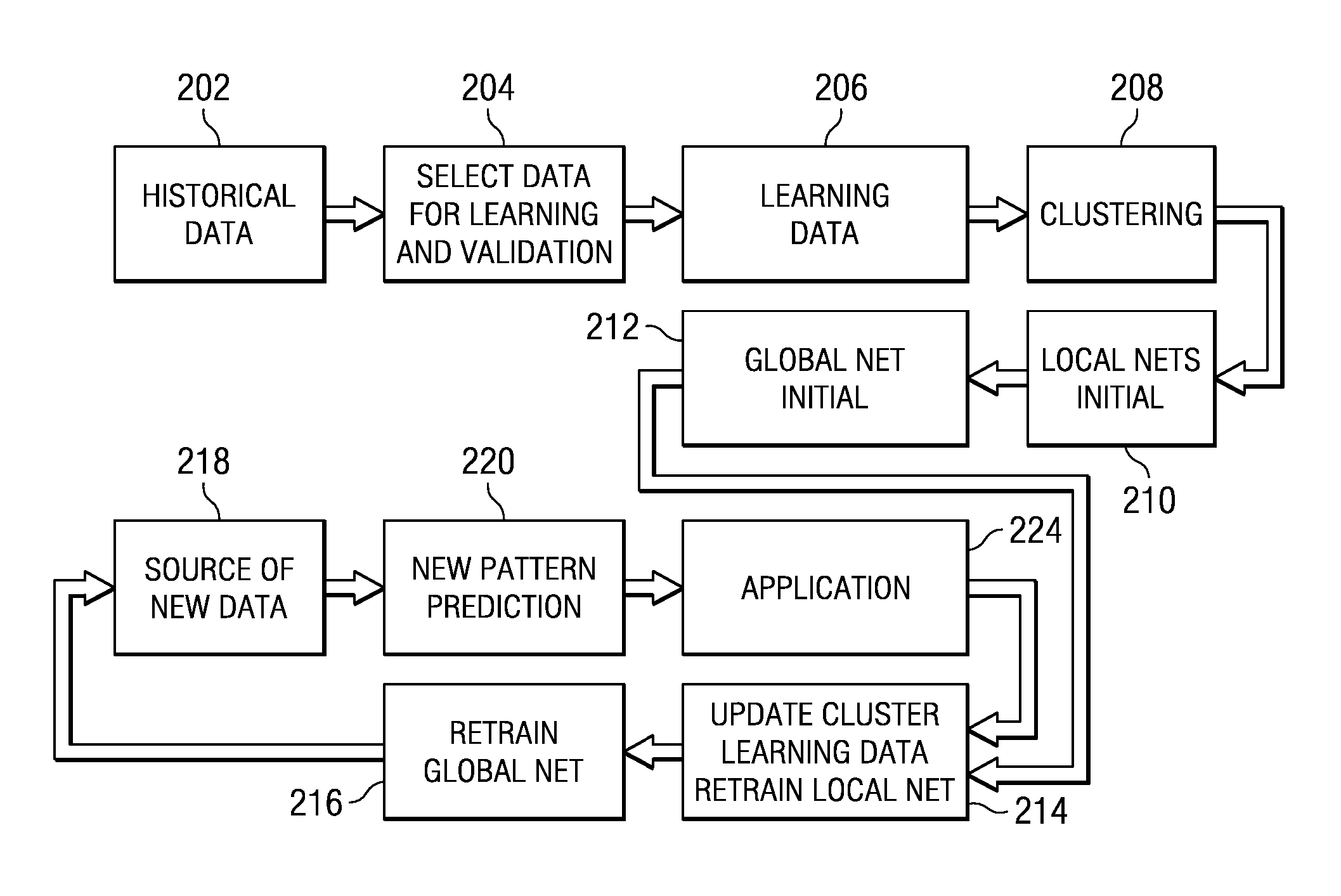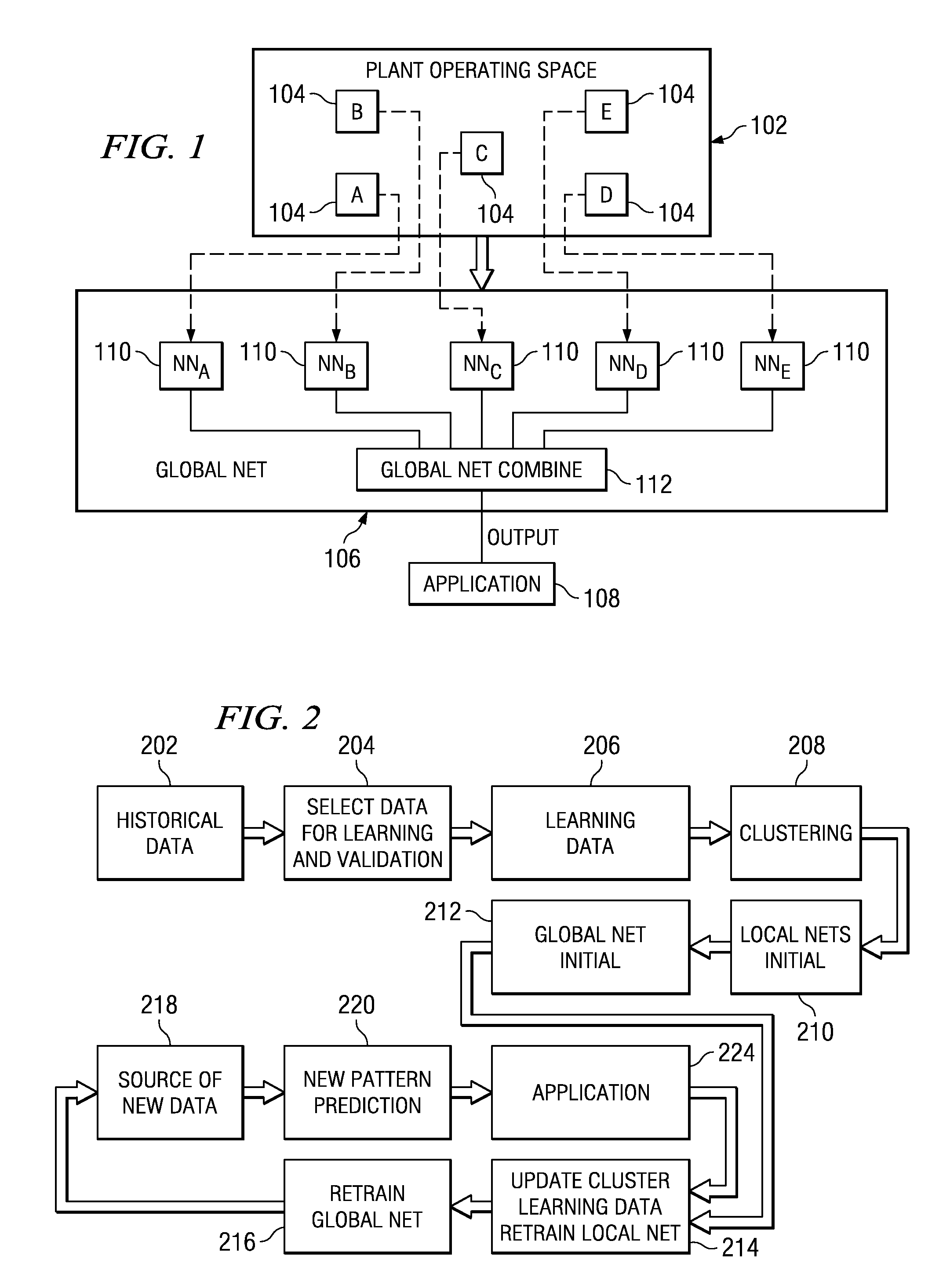Neural network model with clustering ensemble approach
a neural network model and ensemble technology, applied in biological models, process and machine control, instruments, etc., can solve the problems of increasing computational problems, low competence factor in results generated in sparsely populated areas, and inability to collect data in those regions
- Summary
- Abstract
- Description
- Claims
- Application Information
AI Technical Summary
Problems solved by technology
Method used
Image
Examples
Embodiment Construction
[0026] Referring now to FIG. 1, there is illustrated a diagrammatic view of the global network utilizing local nets. A system or plant (noting that the term “system” and “plant” are interchangeable) operates within a plant operating space 102. Within this space, there are a number of operating regions 104 labeled A-E. Each of these areas 104 represent a cluster of data or operating regions wherein a set of historical input data exists, derived from measured data over time. These clusters are the clusters of data that is input to the plant. For example, in a power plant, the region 104 labeled “A” could be the operating data that is associated with the low power mode of operation, whereas the region 104 labeled “E” could be the region of input space 102 that is associated with a high power mode of operation. As one would expect, the data for the regions would occupy different areas of the input space with the possibility of some overlap. It should be understood that the data, althoug...
PUM
 Login to View More
Login to View More Abstract
Description
Claims
Application Information
 Login to View More
Login to View More - R&D
- Intellectual Property
- Life Sciences
- Materials
- Tech Scout
- Unparalleled Data Quality
- Higher Quality Content
- 60% Fewer Hallucinations
Browse by: Latest US Patents, China's latest patents, Technical Efficacy Thesaurus, Application Domain, Technology Topic, Popular Technical Reports.
© 2025 PatSnap. All rights reserved.Legal|Privacy policy|Modern Slavery Act Transparency Statement|Sitemap|About US| Contact US: help@patsnap.com



